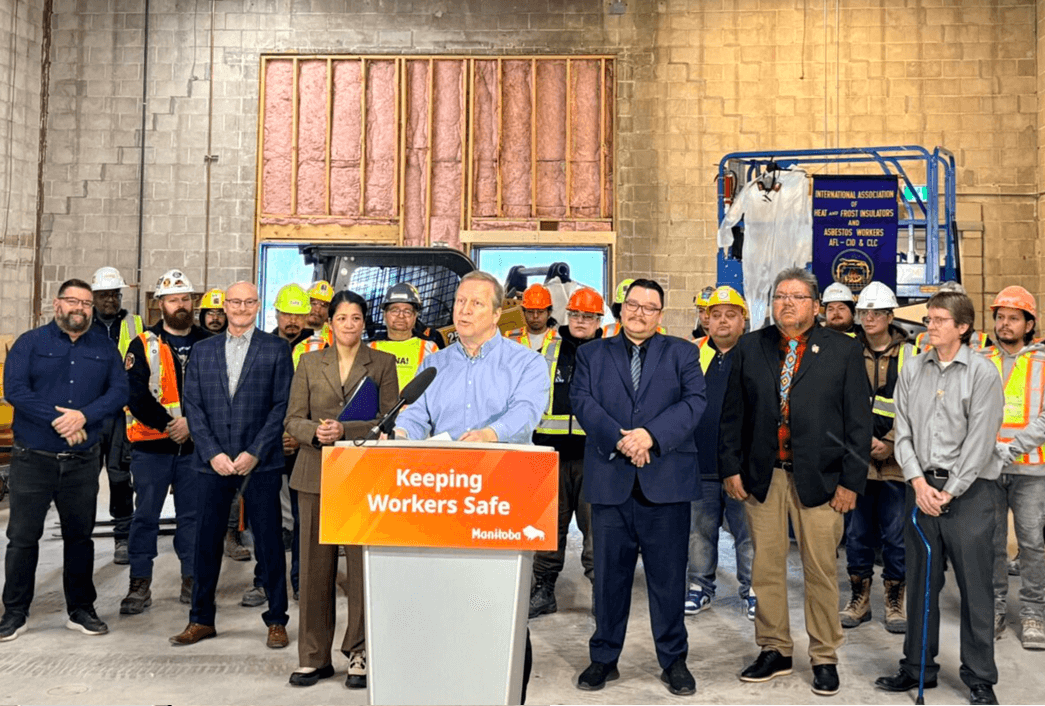
According to Statistics Canada’s latest Labour Force Survey (LFS), unemployment ratcheted up to 6.9 per cent last month, matching a pre-pandemic high. Joblessness has returned to its level in November 2024, which was the highest since January 2017 (excluding the lockdown portions of the pandemic).
Areas of the economy most exposed to American trade uncertainty are beginning to show signs of trouble, with workers of course bearing the brunt. For example, manufacturing and retail and wholesale trade registered the largest job losses in April. As the repercussions of United States President Donald Trump’s trade war continue to accumulate, Canadian workers are feeling the pinch.
On a year-over-year basis, the number of unemployed people was up by 13.9 per cent, or 189,000 workers. Moreover, among the jobless, long-term unemployment is growing. As StatCan notes, “Among those who were unemployed in March, 61.0% remained unemployed in April, higher than the corresponding proportion for the same months in 2024 (57.3%).”
Young workers also continue to face significant challenges. As more young men (aged 15 to 24) searched for work in April, their unemployment rate rose by 1.1 percentage points to 15.4 per cent. The economy failed to produce jobs sufficient to meet the demand for work among male youth.
According to the LFS, unemployment also rose slightly among core-aged (25 to 54 years old) women, bringing their unemployment rate to 5.8 per cent, matching that of their male counterparts. On a year-over-year basis, unemployment is up for both core-aged men and women.
Core-aged women in particular saw their employment fall by nearly a full percentage point, erasing a similar net gain registered between December 2024 and February 2025. These employment losses were concentrated in part-time work in April, which may indicate that some of the burden of labour market adjustment is falling on the more precariously employed.
Employment among core-aged men was up only slightly, while workers in both groups aged 55 and older saw only modest job gains.
Yet if the situation of core-aged workers is perhaps our best indicator of overall labour market health, annual growth in joblessness and weak employment are not good signs.
Though the overall employment level in Canada remained relatively stable in April, the economic costs of the American trade war are beginning to be felt. Moreover, because employment trended downward for much of 2023 and 2024 — as population growth accelerated — the labour market looks markedly softer than it did coming out of the pandemic.
In other words, despite the appearance of relative stability, troubling signs are amassing. This is particularly the case in the manufacturing industry, as we would expect.
In April, net employment fell by 31,000 jobs in manufacturing and 27,000 jobs in wholesale and retail trade. In fact, were it not for a temporary surge in public employment related to the federal election, the overall jobs picture would likely have been worse. As analysts have been warning for some time, employers are delaying investment, cancelling hiring plans and generally taking a ‘wait-and-see’ approach given the uncertainty and instability unleashed by Trump’s on-again, off-again trade policy. It was only a matter of time before these developments filtered their way into the labour market data.
As a further indication of the trade impact, employment fell by 35,000 in Ontario where Canadian manufacturing is largely clustered. This followed a drop of 28,000 jobs in March. Unemployment in the province now sits at 7.8 per cent, second only to Newfoundland and Labrador among the provinces. In the Windsor area, where automobile manufacturing accounts for more than 43.1 per cent of manufacturing jobs and 9.2 per cent of all employment, joblessness shot up by 1.4 percentage points last month, pushing unemployment to a troubling 10.7 per cent.
Further auto layoffs are coming at General Motors in Oshawa, though these appear to be less directly related to trade tariffs.
Even in Quebec, where employment looks healthier, cracks are beginning to show. In April, employment grew by only 0.4 per cent, or 18,000 net jobs. This was also the first instance of recorded job growth since last November. The labour market, moreover, failed to produce adequate jobs for all those searching for work. Unemployment rose slightly to 6 per cent, the highest level observed in the province since October 2017 (outside of the pandemic).
As part of its monthly release, StatCan also provided additional information comparing Canadian and American labour market conditions against the background of the Trump tariff war. When adjusted to the American method for calculated unemployment, Canadian joblessness is now 1.6 percentage points higher than the U.S. rate. During the period of peak labour market tightness following the pandemic, the unemployment gap shrank to 0.2 per cent. Between 2017 and 2019, Canadian unemployment averaged just under 1 percentage point higher.
April’s figures thus suggest that the fallout from the trade war is so far hitting Canadians harder. In fact, the U.S. Bureau of Labor Statistics’ April report showed modest job gains and an unchanged American unemployment rate. Whether the trade war burden continues to be felt unevenly remains to be seen, as continental linkages render U.S. workers far from immune to the impacts of Trump’s policies.
Additionally, StatCan asked surveyed workers in April about their perceptions of job security. In particular, survey respondents were asked whether they expected the number of jobs at their workplaces to grow, decrease or stay the same, and whether they expected to lose their job in the next six months. Overall, 13.2 per cent of workers expected the number of jobs to decrease, with this figure rising to 18.6 per cent among those whose workplace was dependent on exports to the U.S. Yet, according to StatCan, public administration was the industry with the largest share of workers fearing job losses. More than a quarter of workers in public administration reported expecting jobs in their workplace to decrease in the next six months. Given Prime Minister Mark Carney’s call to shrink so-called ‘operational spending,’ such fears may unfortunately be well-grounded.
On the other hand, StatCan found relatively strong feelings of job security, with only 7.7 per cent of workers indicating agreement or strong agreement that they might lose their jobs. Let’s hope their perceptions are correct.
April’s LFS data showed further signs of labour market softening. Average hours worked were up slightly, while average hourly wage growth continues to decelerate, growing by 3.4 per cent in April, following growth of 3.6 per cent the previous month.
As Unifor calculates, real inflation-adjusted wage growth was just 1.1 per cent in April. Moreover, as the union further pointed out, with wage levels moderating across the economy, a number of industries have now begun posting year-over-year real wage declines, including in non-durables manufacturing (-1.7 per cent), wholesale trade (-3.2 per cent), retail trade (-1.3 per cent), accommodation and food services (-0.4 per cent), and professional, scientific, and technical services (-2.5 per cent). In other words, the general picture masks more negative signs among particular sets of workers.
Understandably, April’s report has bank economists worried, with some now predicting an additional Bank of Canada rate cut in the near future. With the federal election now settled, and Carney ostensibly negotiating a trade settlement with Trump, it remains to be seen if economic instability and further contraction are coming.
Given the current U.S. administration, long-term stability simply isn’t in the cards. Workers and unions will have to remain on guard, prepared to fight not only against the consequences of American trade policy but also against the concessions that Canadian governments may also seek to extract.
April’s job figures may be the first signals of the new economic reality under Trump, but they likely won’t be the last. Unions need to prepare.
Recent Class Struggle Issues
- May 5 | Total Catastrophe Was Avoided, But Canada Is Heading Rightward
- April 30 | Arbitration Can Be A Powerful Choice In The Union Playbook
- April 22 | A Major Canadian Union Is Calling For Pensions To Divest From Tesla
- April 14 | The Left Must Rebuild Our Electoral Power







